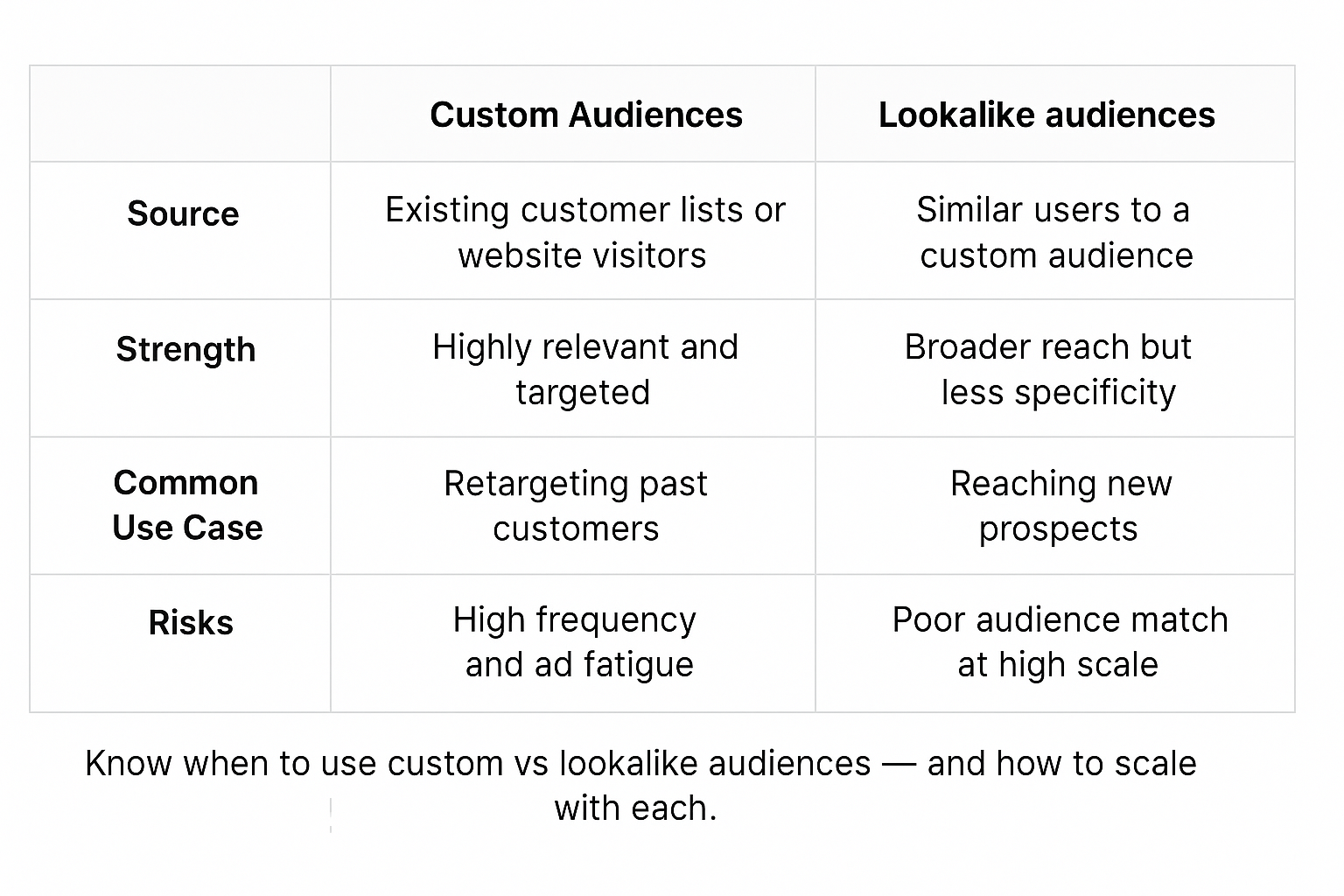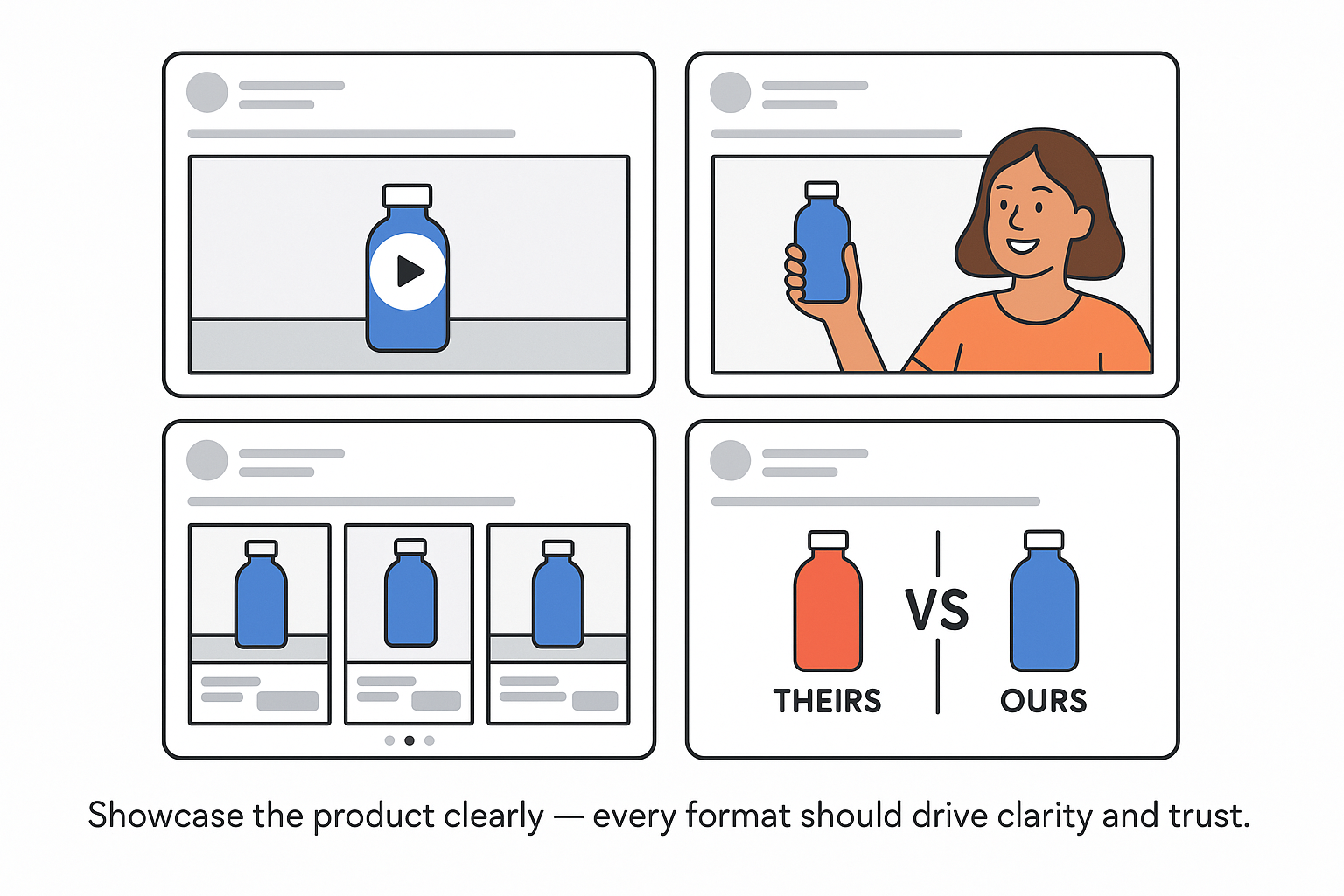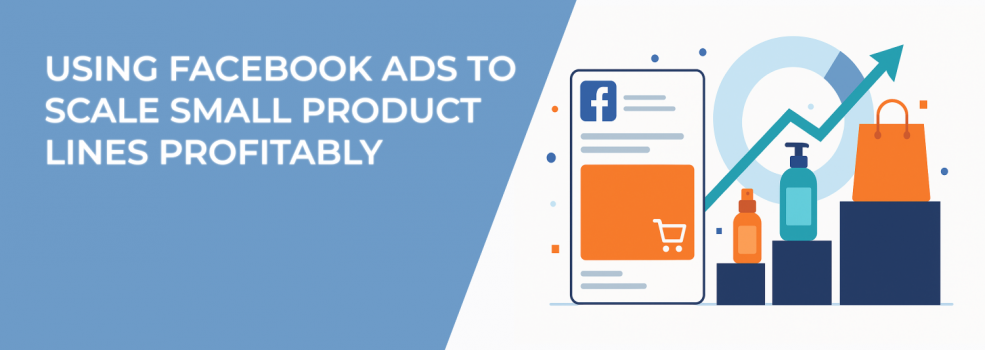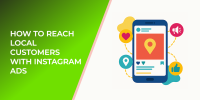Scaling a small product line with Facebook Ads sounds simple. But doing it profitably? That takes more than ad budget. It takes structure, testing, and a plan.
For product-focused businesses — especially in competitive regions like the U.S., UK, and Canada — Meta’s ad platform offers reach and targeting power. But reach alone doesn’t convert. Especially not when you’re selling just a few core products.
This guide walks through how to scale smarter, using audience data, campaign structure, and ad creative — without overspending or losing performance.
What Scaling Really Means for Small Product Lines
Let’s start with a reality check: scaling doesn’t mean throwing money at your ads and hoping the ROAS holds.
For small brands, scaling should mean:
-
Lowering cost per purchase (CPP) while maintaining or increasing volume.
-
Expanding into new audiences, without hurting return on ad spend (ROAS).
-
Improving average order value (AOV), conversion rates, or purchase frequency.
-
Building consistent performance with ad creative that sells — not just looks good.
But scaling only works when the foundation is solid. If you're still stuck in the learning phase, struggling with conversions, or watching metrics swing wildly from day to day, focus on stability first.
Need help getting your campaigns off the ground? Start with Facebook Ads Not Converting: How To Fix It.
Begin With Warm Audiences — Not Broad Ones
The fastest way to scale a small product line is not to go broad. It’s to go deeper into audiences that already know or trust you.

Focus your initial campaigns on high-intent, warm sources:
-
Website visitors, especially people who’ve viewed product pages or added to cart.
-
Previous customers, ideally those who purchased within the last 180 days.
-
Social media engagers, video viewers, or commenters.
-
Email subscribers or people who signed up through lead magnets.
Once you’ve tested and proven your offer to these groups, expand using lookalike audiences — but do it strategically. Try creating lookalikes based on high-value customers (e.g., repeat buyers or subscribers), rather than all customers.
Want to see which types of audiences deliver the best results? Check out Custom vs Lookalike Audiences: What Works Best for Facebook Campaigns.
Also, avoid layering on too many filters too soon. If you see the “Ad Set May Get Zero” message, you’re likely over-narrowing your targeting. Learn how to fix it in Why You See 'Ad Set May Get Zero' on Facebook and How to Fix It.
Product-Focused Creatives Win — If They’re Clear
When you have just a handful of products to advertise, your creative has to work harder. Each image, video, or carousel needs to do more than attract attention — it needs to inform, persuade, and convert.

Effective creative for small product lines usually includes:
-
Short product demo videos (10–15 seconds), with a clear before/after or benefit.
-
UGC-style testimonials or review snippets.
-
Carousel ads with product variants or key use cases.
-
Comparison visuals (e.g., “ours vs. theirs” or “before and after”).
You don’t need flashy design or celebrity influencers. You need clarity. The ad should immediately answer: What is it? Who is it for? Why now?
If your ads look good but aren’t converting, review The Ultimate Guide to Facebook Ad Formats for tested formats that sell.
Use a Full-Funnel Campaign Structure
Many small advertisers run one conversion campaign and expect to scale from there. That’s a mistake.
Instead, structure your campaigns to guide people through the funnel:
-
Top of Funnel (TOF): Use reach, video views, or awareness objectives to introduce your brand. Your creative should be broad, attention-grabbing, and low-pressure.
-
Middle of Funnel (MOF): Retarget visitors, video viewers, or engagers. Focus on education, social proof, and credibility.
-
Bottom of Funnel (BOF): Push for conversions. Highlight urgency, discounts, bundles, or user-generated content that builds trust.
Want to see how to map audiences to campaign objectives? Don’t miss Facebook Ads Funnel Strategy: From Audience Identification to Conversion.
Track the Right Metrics — Not Just ROAS
Scaling smart means tracking the right signals. Don’t obsess over ROAS in isolation. Look at the metrics that shape your campaign’s actual profitability:
-
Cost per Result (CPR): Are you getting conversions at a price that fits your margin?
-
Frequency: Is the same person seeing your ad five or more times? If so, expect fatigue.
-
Landing Page Conversion Rate (LPCR): If your click-through rate is solid but people don’t buy, fix your product page first.
If you’re running product ads in cities or regions with higher CPMs — like New York, London, or Sydney — test creative formats that deliver more value in less time (e.g., short product demos or mobile-first carousels).
Scale With Intention — Not Just Budget Increases
Scaling should feel like controlled growth — not guesswork.
Rather than doubling your budget overnight, use these proven strategies:
-
Increase ad set or campaign budgets by 10 to 20 percent every three to four days.
-
Duplicate your best ad set and change one variable: audience, placement, or creative.
-
Launch lookalikes based on high-quality signals — such as people who’ve bought more than once or spent over a certain threshold.
For advanced scaling methods, bookmark The Science of Scaling Facebook Ads Without Killing Performance.
Remember: small product lines scale best through horizontal testing, not by dumping money into one campaign.
Avoid These Common Scaling Mistakes
Scaling can backfire fast if you ignore the warning signs. Watch for these pitfalls:
-
Launching new ad sets too quickly without enough conversions to guide optimization.
-
Relying on a single audience or a single creative — this creates fatigue and weakens relevance.
-
Ignoring micro-conversions like “add to cart” or “view content” — these can improve pixel learning in the early stages.
And finally, keep your geo-targeting clean. If you're trying to scale in multiple U.S. states or across international markets, segment campaigns to prevent cost bloat or delivery inefficiencies.
Final Takeaway: Simplicity Wins
Scaling a small product line on Facebook isn’t about acting big — it’s about thinking smart.
Focus on what you know works. Test methodically. Use your customer data to inform both targeting and creative. And scale at a pace that keeps performance consistent.
If your current campaign is profitable, double down. If it’s unstable, fix the funnel — don’t just increase spend.

